
With the Google Pixel 7a, the Pixel 7 is pulled into the vortex of what makes a better affordable Android phone. Similar specifications and an almost identical design make it a touch harder to separate. Here’s everything you need to know.
- Pixel 6a vs. Pixel 6: How much difference does $150 actually make? [Video]
- Pixel 7 vs. Pixel 7 Pro: Which is the right choice for you? [Video]
A tough critic would argue that the Pixel A-series hasn’t kept up with the burgeoning pack of budget smartphones outside of Western markets in recent years. Google has sought to shore up the lineup with distinct trade-offs that made it easier to determine which device in the lineup is right for you and your budget.
Although we welcome the change, the Pixel 7a almost wipes out the consistency of the full Made by Google lineup for mid-2023. It’s a spanner in the works, but the device is all the better for it. With many changes to the recipe, it does start to look very similar to the regular Pixel 7.
For more video content, subscribe to 9to5Google on YouTube.
Hardware
Side by side, there is little if anything to distinguish the Pixel 7a and the Pixel 7. There are some alterations to the dimensions of the 7a. It’s actually a tad smaller on all sides with a 6.1-inch screen versus a 6.3-inch screen on the regular 7. This isn’t a huge decrease, but it does make a difference. Annoyingly, the Pixel 7a could have been smaller as the bezels are chunkier on all sides.
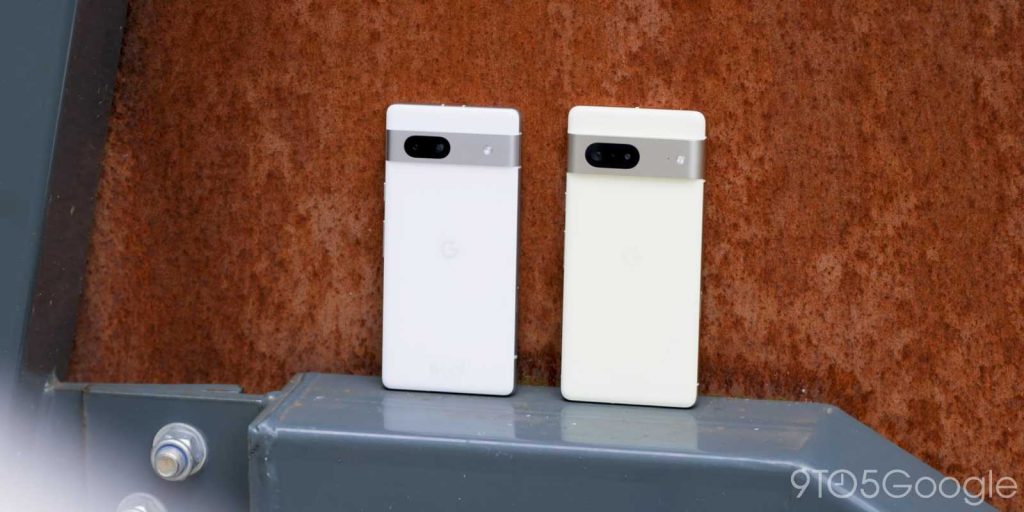
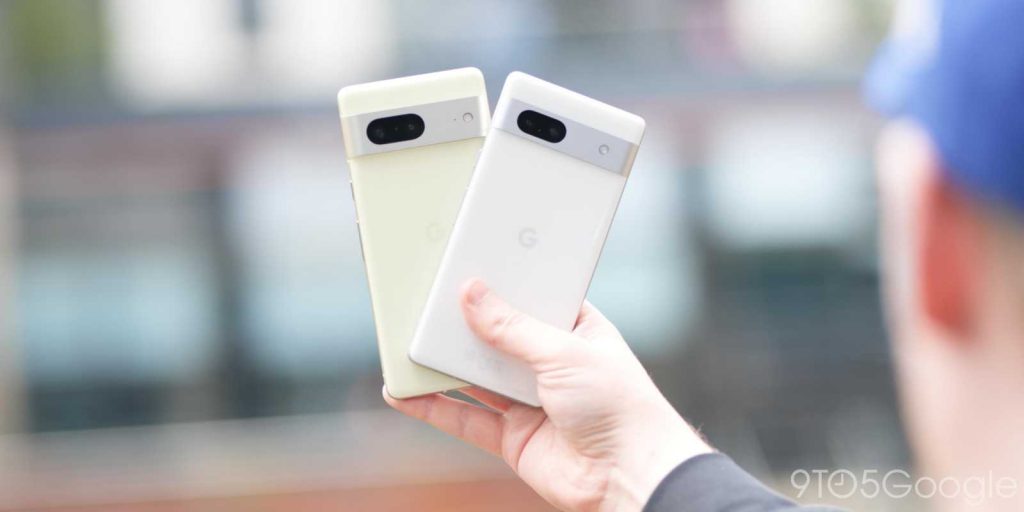
You may notice that both screens are rated at 90Hz. The Pixel 7a is tuned out of the box to 60Hz, but the “Smooth Display” feature can be enabled right away. Even with similar display specifications, the Pixel 7 edges out the 7a due to the higher maximum brightness and smaller bezels.
| Google Pixel 7 | Google Pixel 7a | |
| Size | 6.3 inches | 6.1 inches |
| Dimensions | 155.6 x 73.2 x 8.7 mm (6.13 x 2.88 x 0.34 in) | 152.4 x 72.9 x 9 mm (6.00 x 2.87 x 0.35 in) |
| Display | 90Hz / AMOLED / FHD+ / Gorilla Glass Victus / 2,400 x 1,080 pixels / 416ppi | 90Hz / FHD+ / Gorilla Glass X / 2,400 x 1,080 pixels / 431ppi |
| Chipset | Google Tensor G2 | Google Tensor G2 |
| RAM | 8GB DDR5 | 8GB DDR5 |
| Storage | 128 / 256GB UFS 3.1 | 128 UFS 3.1 |
| Battery | 4,355mAh | 4,385mAh |
| Rear camera | 50MP wide / 12MP ultra-wide | 64MP wide / 12MP ultra-wide |
| Front-facing camera | 11.1MP | 13MP |
| Biometrics | In-display fingerprint scanner | In-display fingerprint scanner |
| Colors | Obsidian / Snow / Lemongrass | Arctic Blue / Carbon / Coral / Cotton |
| Weight | 197g | 193g |
| IP rating | IP68 | IP67 |
At the maximum refresh rates, the 7a does have more stuttering and doesn’t always feel quite as smooth. It’s still slick and a step up over the 6a screen. These are well-tuned panels with accurate colors, great contrast, and a rich experience no matter which tuning option you have selected.
Other notables include a bump to 8GB RAM on the 7a with the core specifications lining up exactly – including the Tensor G2 processor. Unfortunately, there is only one storage variant of the latest device at 128GB whereas the Pixel 7 has 128 and 256GB variants available.
The range of color options might be a major attraction with four options of light blue, black, white, and orange. Google states that the “Camera bar” is metal but it actually feels a lot like plastic albeit cold to the touch. It does protrude out less extensively. These nuances are not visible from far away, but up close you can tell there are differences to help reduce the cost.
Software

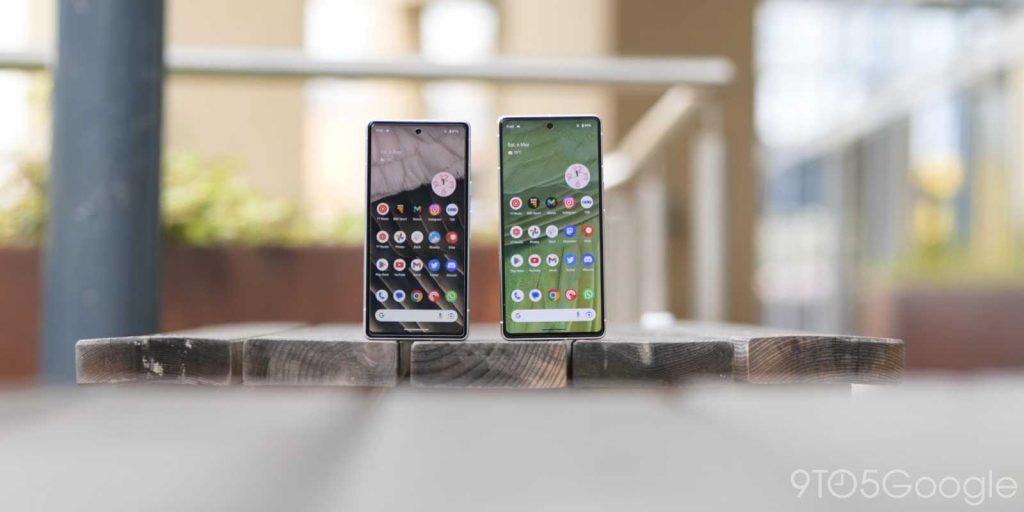
The software is also identical on this duo. Google One VPN adds added security without requiring a subscription plan, while Face Unlock jumps down to the A-series for the first time. You don’t get Cough and Snore section here though for whatever reason.
| Google Pixel 7 | Google Pixel 7a | |
| Software | Shipped with Android 13 | Shipped with Android 13 |
| Features | In-display fingerprint scanner Face Unlock Photo Unblur Cinematic Blur Google One VPN Cough and snore detection | In-display fingerprint scanner Face Unlock Photo Unblur Google One VPN |
Performance feels identical given the internals. This is one of the biggest long-term benefits for anyone looking at either handset. 8GB of RAM ensures that all of your apps stay in stasis and don’t randomly drop out of memory. While Tensor G2 is not a powerhouse, it’s still a solid chip that can handle all kinds of usage from gaming to more.
Google has stuck to the five-year update commitment. This consists of three full OS upgrades alongside two further years of regular security patches. Based upon those promises, you’ll get Android 16, but after that, it’ll be monthly OTAs for added device protection. Support is set to cease for the Pixel 7 series in October 2027, while the 7a will be supported a little longer until around July 2028. That is unlikely to include any major OS functionality.
Battery
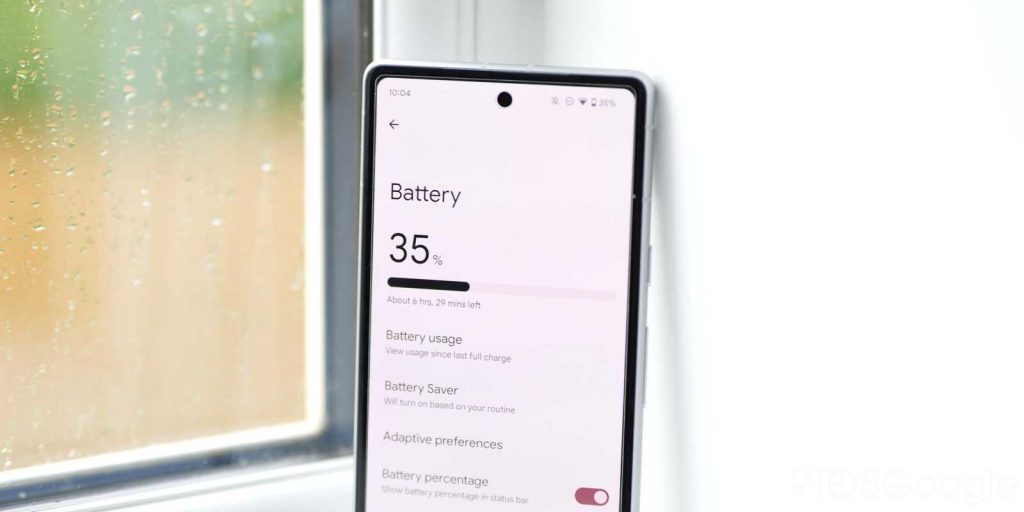
Despite being larger, the Pixel 7 comes with a smaller capacity internal battery. The increase of 30mAh might not make a huge deal of difference in day-to-day lifespan though. When the displays are tuned to 90Hz, you’ll get all-day longevity with either model.
| Google Pixel 7 | Google Pixel 7a | |
| Battery size | 4,355mAh | 4,385mAh |
| Charging speed | 30W wired (21W peak) 21W Qi wireless w/ Pixel Stand 2 5W reverse wireless | 18W wired 7.5W Qi wireless |
Another interesting upgrade is the addition of wireless charging to the Pixel 7a. This has long been a request – along with a higher refresh rate panel – so it’s nice to see it added. The speeds are capped at a much lower 7.5W rate here, and reverse wireless charging is not available. Any wireless charging pad will work, but you get more functionality and with the Google Pixel Stand. Sadly, this does not unlock any improved top-up rates.
18W wired charging remains a frustrating inclusion on the Pixel 7a. Charging will take around two hours from 0-100% on the Pixel 7a via wire and much longer when using a wireless charger. The charge times using the official 30W power brick are only marginally slower but the wireless charge times lag way behind the Pixel 7.
Cameras
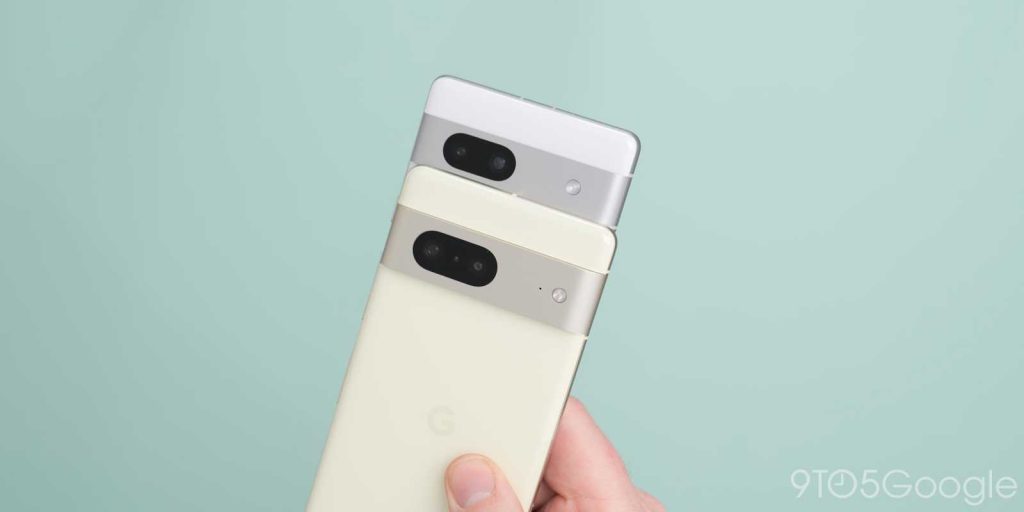
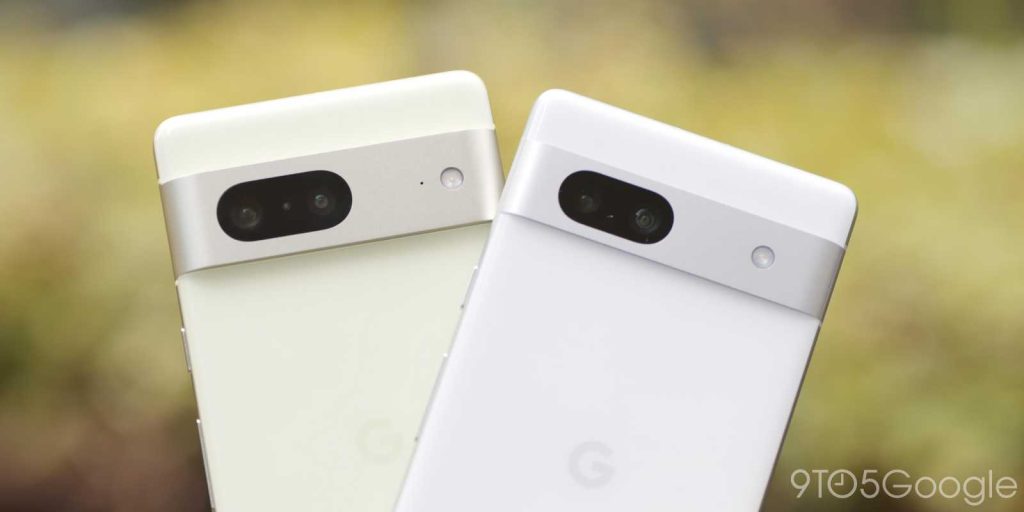
This is where things start to diverge. Google has decided that the Sony IMX363 is no longer required and the Pixel 7a is the first-ever Pixel to ship with a 64-megapixel main sensor. All images taken with either main lens is downsampled. This is 12.5-megapixels on the Pixel 7 while the Pixel 7a produces 16.1-megapixel images – another first.
To their credit, it’s tough to tell images apart, but the marginally larger 50-megapixel sensor on the Pixel 7 series results in greater depth in images. In essence, this upgrade makes the decision as to which phone you should choose a little tougher.
| Google Pixel 7 | Google Pixel 7a | |
| Main sensor | Samsung GN1 50MP f1.9 aperture | Sony IMX787 64MP f1.9 aperture |
| Secondary sensor | Sony IMX 386 12MP ultra-wide-angle f2.2 aperture 114˚ FOV | Sony IMX712 13MP ultra-wide-angle f2.2 aperture 120˚ FOV |
| Front-facing sensor | Sony IMX 663 11.1MP f2.2 | Sony IMX712 13MP f/2.2 |
| Camera hardware features | OIS EIS PDAF | OIS EIS PDAF |
| Camera software features | 8x zoom Guided Frame 4K UHD 60fps (all lenses) 10-bit HDR10 Video Real Tone 2.0 Guided Frame Cinematic Blur | 8x zoom Guided Frame 4K UHD 60fps 4K UHD 30fps (selfie and wide-angle) 10-bit HDR10 Video Real Tone 2.0 |
The minimal 1-megapixel change to the ultra-wide means that the 7a has a marginally wider field of view. Within the camera UI zoom is rated at 0.5x compared to the 0.7x on the regular Pixel 7. Only “Cinematic Blur” is not present on Pixel 7a. Every other option is available, but the video recording frame rates are limited to 60fps at 1080p with every lens. 4K UHD is capped at 30fps on all but the main sensor.
Objectively, the Pixel 7 has a better camera system than the Pixel 7a. Subjectively, the differences are hard to distinguish – save the greater image depth – and will likely never be noticed by someone not versed in smartphone camera tech.
Pixel 7 vs. Pixel 7a: Which should I choose?
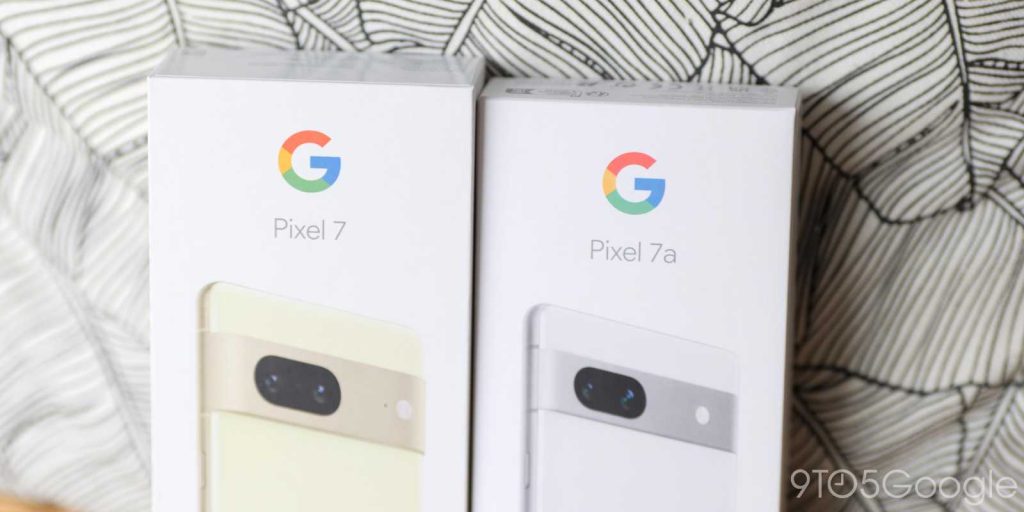
About upgrading: 9to5Google often gives specific product recommendations. Sometimes, we may suggest not upgrading, due to various reasons including, but not limited to: increased device cost, negligible performance gains, or environmental impact. Whether to upgrade is always your call, but our aim is to help you make as informed a decision as possible.
For the first time since the launch of the Pixel 5 and 4a 5G, Google has made two phones that are so closely aligned that it’s hard to truly determine which is the better buy for most people. However, given that the 7a has improved in almost all areas this year, it’s the easiest to recommend at the default retail price.
All of the core features are identical. From Face Unlock to the OS update schedule. The two core differences are in the camera’s main sensor and the IP rating. If you want a marginally more pocketable device, it’s worth more than a glance. Over the past few years, the A-series has stood out and now it stands out so much that it joins the pack – which is most definitely not a negative.
If you can snag discounts on the regular Pixel 7, it does become a different proposition. Opt for the late-2022 model. Otherwise, choose the Pixel 7a and enjoy all the trappings of a flagship Google phone without paying a premium.
Get the Pixel 7a
Get the Pixel 7
FTC: We use income earning auto affiliate links. More.




Comments